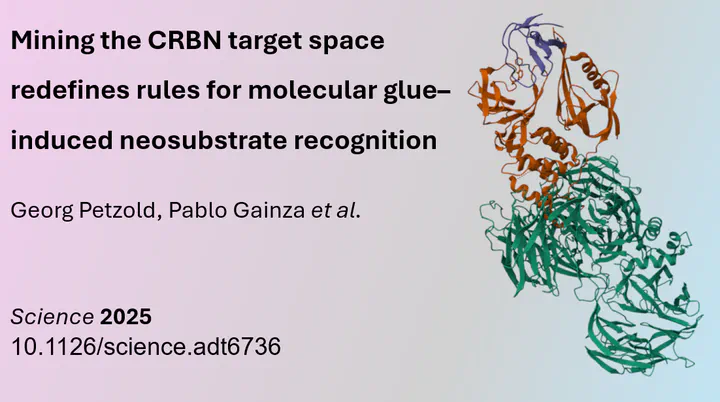New Targets for Molecular Glues

Molecular glues are the stars of the world of targeted protein degraders. They are a hot topic, with many research articles describing their discovery and exploration. Despite their huge popularity in contemporary biological chemistry, our understanding of them is still limited. Typically, molecular glues are discovered through drug screening with extensive drug libraries, serendipity or data mining. At present, the amount of information available to guide their rational design is limited.
In principle, molecular glues bring two enzymes into close proximity, gluing them together. In a new study published in the magazine Science, researchers from Monte Rosa Therapeutics (Boston, USA) screened the human genome for specific motifs — G loops — that could be targeted by molecular glues to bind CRBN to a protein. Following this in silico screening, some of the hits were validated and it was indeed found that molecular glues could induce proximity between CRBN and many of the predicted proteins.
This method enabled the identification of several hundred protein domains that are susceptible to CRBN-engaging molecular glues. Interestingly, validating some of these domains revealed that proximity alone is insufficient for protein degradation, since many proteins that come into close proximity with CRBN are not degraded. The team then observed that G-loop mimicking structural motifs may be worth exploring, with VAV1 bearing such a motif as an example. Finally, they found that a compound from their library could engage the VAV1-SH3c domain with CRBN despite lacking a G-loop structure.
In conclusion, this study has deepened our understanding of molecular glues and how they interact with human proteins. Most importantly, it highlights the potential of hundreds of protein domains that could be used in future drug design campaigns, making it possible to target the ‘undruggable space’.
Read more: Mining the CRBN target space redefines rules for molecular glue–induced neosubstrate recognition Science doi:10.1126/science.adt6736